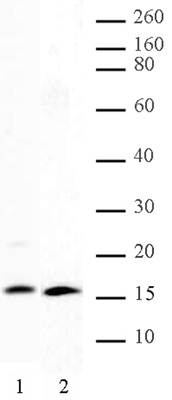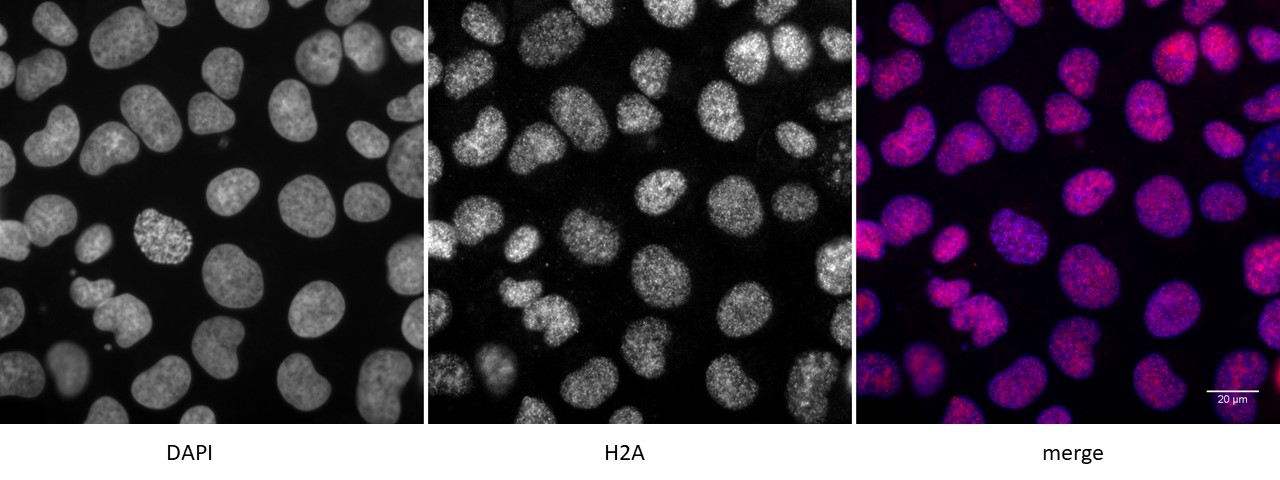Histone H2A, C-terminal antibody (pAb)
Host / Isotype
Rabbit / IgG
Reactivity
Human, Wide Range Predicted
Applications
IF, WB
Cat No : 39591,39592 39591
Synonyms
Validation Data Gallery
Product Information
| Tested Applications |
IF, WB
Applications Validated by Active Motif: IF: 1:500 dilution WB: 1:500 - 1:1,000 dilution |
| Tested Reactivity | Human, Wide Range Predicted |
| Host / Isotype | Rabbit / IgG |
| Class | Polyclonal |
| Type | Antibody |
| Immunogen | This Histone H2A, C-terminal antibody was raised against a peptide containing the C- terminal region of human histone H2A. |
| Full Name | Histone H2A, C-terminal antibody (pAb) |
| Synonyms | histone H2A, H2, histone, histones, H2A, histone-H2A, histoneH2A, c-terminal, pAb, polyclonal, antibody, antibodies, sample |
| Molecular weight | 14 kDa |
| GenBank accession number | NP_003508 |
| RRID | AB_2793270 |
| Purification Method | Affinity Purified |
| Buffer | Purified IgG in 70 mM Tris (pH 8), 105 mM NaCl, 31 mM glycine, 0.07 mM EDTA, 30% glycerol and 0.035% sodium azide. Sodium azide is highly toxic. |
| Storage | Some products may be shipped at room temperature. This will not affect their stability or performance. Avoid repeated freeze/thaw cycles by aliquoting items into single-use fractions for storage at -20°C for up to 2 years. Keep all reagents on ice when not in storage. |
Background Information
Histone H2A is one of the core components of the nucleosome. The nucleosome is the smallest subunit of chromatin and consists of 147 base pairs of DNA wrapped around an octamer of core histone proteins (two each of Histone H2A, Histone H2B, Histone H3 and Histone H4). Histone H1 is a linker histone, present at the interface between the nucleosome core and DNA entry/exit points; it is responsible for establishing higher-order chromatin structure. Chromatin is subject to a variety of chemical modifications, including post-translational modifications of the histone proteins and the methylation of cytosine residues in the DNA. Reported histone modifications include acetylation, methylation, phosphorylation, ubiquitylation, glycosylation, ADP-ribosylation, carbonylation and SUMOylation; they play a major role in regulating gene expression.


